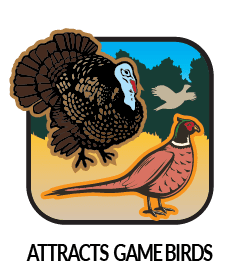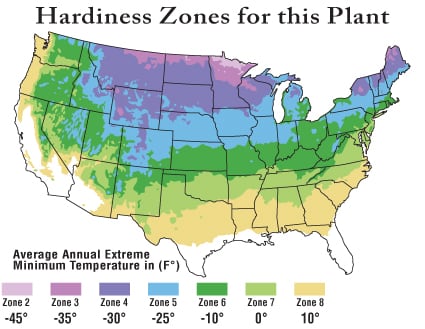Bigtooth Aspen
Plant Type: Dormant, bare-root
Zones: 2-8
Soil Type: Clay, Loamy & Sandy Soils
Site Selection: Full Sun
Mature Height & Width: 40-60' Height and 15-25' Spread
Growth Rate: Fast - 12-24" or more per year once established
Moisture Requirements: Dry to average soils






Bigtooth Aspen
Populus grandidentata
The Bigtooth Aspen is a fast growing, medium sized poplar. Its smooth bark is olive colored, with course ridges and deep furrows. As the name implies, the leaves of this Aspen display larger "teeth" along their margins. The green leaves rustle with even the slightest breeze, and turn a brilliant yellow color in the fall. Will grow on a variety of soils, but thrives best in sandy and loamy soils that are regularly moist, but well drained.
While a close cousin to the Quaking Aspen, there are some subtle differences. The Bigtooth Aspen is less shade tolerant than the Quaking Aspen; it requires full sun, and will not perform well below the canopy of other trees. The Bigtooth Aspen also has a harder bark layer, which grows thicker as it ages and makes it more disease and pest resistant than other Aspens.
Since the Bigtooth Aspen will readily sucker, this tree is best suited for areas where it has some room to spread. Suckers can grow from the root zone, up to 20-30' from the parent tree. This Aspen will grow in a variety of soils, and does well in floodplains that dry down regularly. The Bigtooth Aspen is sensitive to salt spray, and planting near roadways which are salted in the winter is discouraged. Like all Aspens, the wildlife value is relatively high.
Fun fact: Native Americans would grind up the inner bark of the Bigtooth Aspen into meal, and use it to make bread.
Common Uses:
- Ornamental, unique bark, trembling leaves
- Fast growing tree, gives quick cover
- Fall color
- Excellent wildlife value
- Harvested for pulpwood, and its bark is pelletized for fuel and cattle feed
- Commonly planted in flood plains that regularly dry down
The Bigtooth Aspen is an important food source for a variety of animals. Moose and Whitetail Deer will browse the younger branches and the suckers of this tree. Beavers eat the bark, twigs and branches of the Bigtooth Aspen. The seeds, catkins and buds are eaten by Quail and many other birds. Ruffed Grouse depend on various parts of Aspen trees for a primary food source year round, and routinely use dense groves for protective cover . Cavity nesters often use the Bigtooth Aspen to make their home.





